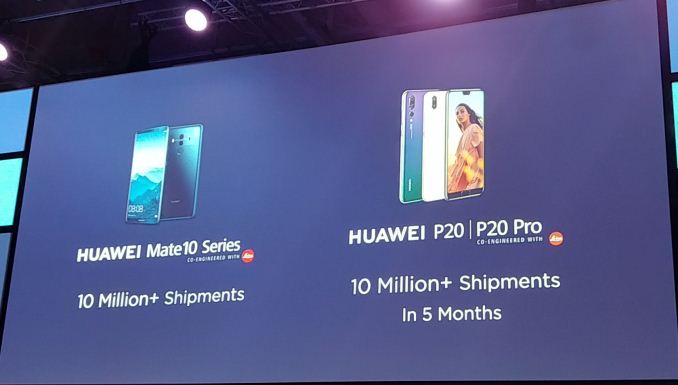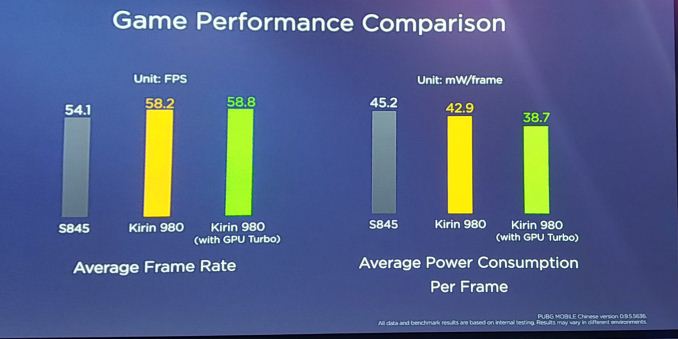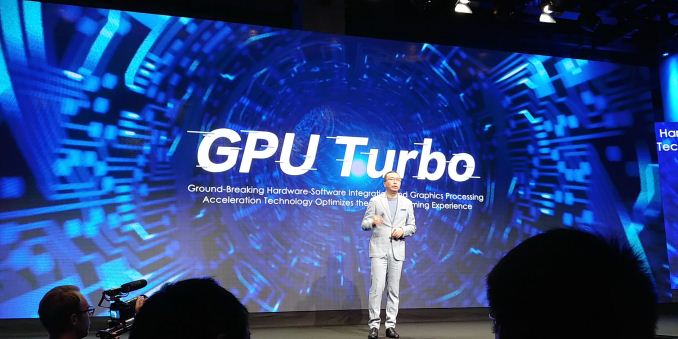Huawei’s GPU Turbo: Valid Technology with Overzealous Marketing
by Ian Cutress & Andrei Frumusanu on September 4, 2018 9:00 AM EST- Posted in
- Smartphones
- Huawei
- Mobile
- Benchmarks
- honor
- Neural Networks
- Kirin 970
- AI
Conclusion: Still A Plus, But
Back in 2015, AnandTech was in the extraordinary position to be the first western publication to actually meet with HiSilicon, reporting on the Kirin 950 from their Beijing media briefing. One of the things I still remember from back then was a definitive sense of humility and a very good sense of self-awareness in regards to the company’s products. Things have changed a lot in the past three years, and Huawei as a company has grown considerably since then.
Huawei and Honor combined now sell 153 million smartphones a year, and Huawei is now the second largest smartphone manufacturer worldwide, recently overtaking Apple. Honor claims it is fifth worldwide. Huawei has also stated that it will raise its future R&D budget from 15% of total revenue (US$13.23 billion) up to 20-30% during the race to 5G. Both are major players in this space, to the point where Huawei’s in-house silicon design team, HiSilicon, creates its own SoCs to help differentiate its products from those based on Qualcomm and MediaTek SoCs.
The explosive growth from Huawei not only goes into R&D, but also marketing. As the company has expanded, we have seen smartphone launch after smartphone launch held in glamorous places in Europe, along with perhaps the biggest sampling program for smartphone launches ever: all members of the invited press to the show, typically around 500-2000, are sampled. This is compared to Samsung and Apple who offer limited units to select press only, or LG who does both unit distribution at briefings (30+) and sampling to press. With the desire to gain brand awareness, and recognition, Huawei has gone into overdrive with its methodology, which has been a metaphorical double-edged sword – while delivering innovative solutions on the technical side, the brand message in some ways strayed from its more humble roots.
Developing technologies like GPU Turbo is going to be key for Huawei. Huawei has obvious gaming performance, image quality, and power efficiency deficits to Qualcomm’s Snapdragon. Playing with the silicon die for price/performance/area is a balancing act and will offer some gains, but typically at the expense of other specifications. This is why GPU Turbo is important: development of GPU Turbo is a "free" efficiency gain from a hardware perspective. Rather than involving new silicon, it's developed through a dedicated software effort, and as a result of the gains the feature is being rolled out across the range of smartphones that both Huawei and Honor offer at retail. GPU Turbo still has ways to go, such as expanding the number of games supported, and potential improvements on the horizon, such as having a single algorithm to cover all use-cases, but the future looks good for it.
Marketing these technologies, like GPU Turbo, is also important. Comparing the headline 60% better performance and 30% better efficiency data on the Kirin 970, with GPU Turbo, to the Kirin 960, without GPU Turbo, almost a year after the launch of the Kirin 970 and not declaring this in every presentation is a deliberate attempt at obfuscation. This is borne through Huawei’s own data in the same presentations, showing the Kirin 980 achieving minor performance and efficiency gains when the feature is enabled. The gains are still worth having, but are vastly lower than the numbers Huawei likes to promote every time GPU Turbo is mentioned.
This, along with the recent discovery of benchmark detection and acceleration to get higher scores, suggests that someone at Huawei is trying to pull the wool over the users’ eyes. It is not a good look, and despite Huawei’s explosive growth, key figures at the company are going to have to look inwards at how they want the company to be perceived on the main stage. The bigger the company is, the more it ends up under the microscope, so maintaining a level of honesty is important, otherwise the trust with the consumer is lost quick and fast. Trying to hide the real world numbers, just to get high on a performance table, just looks bad. It is bad.
The Final Word on GPU Turbo
As mentioned several times in the review, now that GPU Turbo has been explained in greater detail, the technology is genuine as far as we can tell, and is likely going to be a catalyst for a new way for vendors to differentiate themselves across the mobile spectrum, as the competition will be looking into similar solutions.
For everything we just stated about Huawei’s presentations, we hope that the company is giving plenty of kudos and praise to the teams that had the idea, and developed the technology. In an ever competitive landscape where SoC vendors need to differentiate and try to one-up each other, technologies like GPU Turbo are emerging as innovative advantages, improving the overall user experience.
Time, hardware, and software permitting, we will be aiming to go and get fully accurate benchmark data with and without GPU Turbo on the Kirin 980 after its launch. Stay tuned.
Benchmarking and Core Analysis by Andrei Frumusanu
Extra Analysis and Conclusion by Ian Cutress













64 Comments
View All Comments
jjj - Tuesday, September 4, 2018 - link
Good first step but could be expanded well beyond the GPU and the entire system built around it.Been thinking about this for some years and could lead to very different hardware if you have an NPU manage everything.
ZolaIII - Tuesday, September 4, 2018 - link
NNPU didn't even earn to eat hire. No one will do it better than your self. Switching off two big cores does much more than all this fuss about GPU turbo.mode_13h - Tuesday, September 4, 2018 - link
Not to agree or disagree with your point, but I think you mean "here" instead of "hire".mode_13h - Tuesday, September 4, 2018 - link
You mean like this?https://www.phoronix.com/scan.php?page=news_item&a...
mode_13h - Tuesday, September 4, 2018 - link
Anyway, I'm thinking a deep learning model could probably do a better job at managing core clock speeds and perhaps even deciding whether to schedule certain tasks on big vs. little cores.ZolaIII - Wednesday, September 5, 2018 - link
We (not AI) need to evolve scheduler logic and add SMP affinity flags to processes. Only then game's can begin. Here goes the rain again. By the way thanks for that.mr_tawan - Tuesday, September 4, 2018 - link
Does it raytrace?Manch - Wednesday, September 5, 2018 - link
I think the question that should be asked is:Can it raytrace Crysis?
Lord of the Bored - Wednesday, September 5, 2018 - link
I'd settle for raytracing FEAR.sing_electric - Tuesday, September 4, 2018 - link
This presents a quandary for benchmarking/reviewing: In the past, if a company released drivers that changed the performance of the device while running a specific app, we'd all call it "cheating" if that app was a benchmark. However, by extending the "cheats" to other apps, the user sees real benefits, even though it's the same behavior.It also means that performance numbers have to be taken with even more salt, because the performance on a popular app which has been "Turboed" by Huawei might not be indicative of the performance you see if you only say, play less popular games that Huawei hasn't profiled.